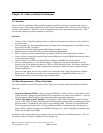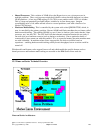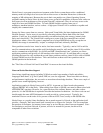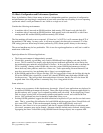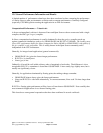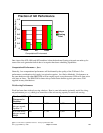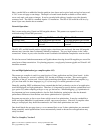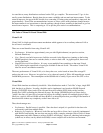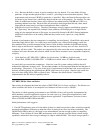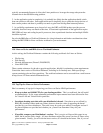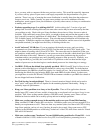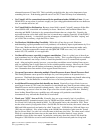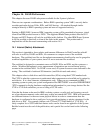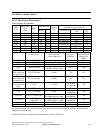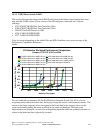
y Cost. Because the disk is virtual, it can be created to any size desired. For some kinds of Linux
partitions, a single modern physical disk is overkill -- providing far more data than required. These
requirements only increase if RAID, in particular, is specified. Here, the Network Storage object can
be created to any desired size, which helps keep down the cost of the partition. For instance, for some
kinds of middleware function, Linux can be deployed anywhere between 200 MB and 1 GB or so,
assuming minimal user data. Physical disks are nowadays much larger than this and, often, much
larger than the actual need, even when user/application data is added on.
y Simplification and Consolidation. The above advantages strongly support consolidation scenarios.
By "right sizing" the required disk, multiple Linux partitions can be deployed on a single iSeries,
using only the required amount of disk space, not some disk dictated or RAID-5 dictated minimum.
Additional virtual disks can be readily added and they can be saved, copied. etc. using OS/400
facilities.
In terms of performance, the next comparison is compelling, but also limited. Virtual Disk can be much
faster than single Native disks. In a really large and complex case, a Native Disk strategy would also
have multiple disks, possibly managed by the various Linux facilities available for RAID and striping.
Such a usage would be more competitive. But we anticipate that, for many uses of Linux, that level of
complexity will be avoided. This makes our comparison fair in the sense that we are comparing what real
customers will select between and solutions which, for the iSeries customer, have comparable complexity
to deploy.
y 1 disk Intel box, 667 MHz CPU: 5 MB/sec for block writes, 3.4 MB/sec for block reads.
y Virtual Disk, OS/400 1 600 MHz CPU: 112 MB/sec for block writes, 97 MB/sec for block reads
As noted, this is not an absolute comparison. Linux has some file system caching facilities that will
moderate the difference in many cases. The absolute numbers are less important than the fact that there is
an advantage. The point is: To be sure of this level of performance from the Intel side, more work has to
be done, including getting the right hardware, BIOS, and Linux tools in place. Similar work would also
have to be done using Native Disk on iSeries Linux. Whereas, the default iSeries Virtual Disk
implementation has this kind of capability built-in.
13.7 DB2 UDB for Linux on iSeries
One exciting development has been the release of DB2 UDB V8.1 for Linux on iSeries. The iSeries now
offers customers the choice of an enterprise level database in Linux as well as OS/400.
The choice of which operating environment to use (OS/400 or Linux) will typically be determined by
which database a specific application supports. In some cases (e.g., home-grown applications), both
operating environments are choices to support the new application. Is performance a reason to select
Linux or OS/400 for DB2 UDB workloads?
Initial performance work suggests :
1. If an OLTP application runs well with either of these two data base products, there would not normally
be enough performance difference to make the effort of porting from one to the other worthwhile. The
OS/400-based DB2 product is a bit faster in our measurements, but not enough to make a compelling
difference. Note also that all Linux DB2 performance work to date has used the iSeries virtual storage
capabilities where the Linux storage is managed as objects within OS/400. The virtual storage option is
IBM i 6.1 Performance Capabilities Reference - January/April/October 2008
© Copyright IBM Corp. 2008 Chapter 13 - Linux 185



